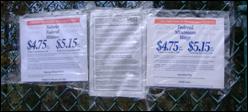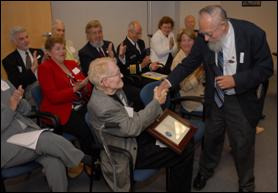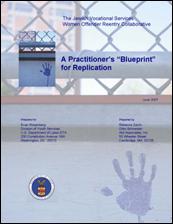|
Fiscal Year (FY) 2008 marks the 10th year that the Department has reported program results under the Government Performance and Results Act (GPRA). Most DOL program level goals and indicators for this reporting period are included in the FY 2009 Performance Budget Overview2; they provide the basis for assessments of DOL’s effectiveness. The Department’s goal structure has three levels:
Strategic Goals
In its FY 2006-2011 Strategic Plan3, the Department identified four goals that serve to focus its various activities on outcomes associated with a common mission:
- Goal 1 — A Prepared Workforce:
Develop a prepared workforce by providing effective training and support services to new and incumbent workers and supplying high quality information on the economy and labor market.
- Goal 2 — A Competitive Workforce:
Meet the competitive labor demands of the worldwide economy by enhancing the effectiveness and efficiency of the workforce development and regulatory systems that assist workers and employers in meeting the challenges of global competition.
- Goal 3 — Safe and Secure Workplaces:
Promote workplaces that are safe, healthful and fair; guarantee workers receive the wages due them; foster equal opportunity in employment; and protect veterans’ employment and reemployment rights.
- Goal 4 — Strengthened Economic Protections:
Protect and strengthen worker economic security through effective and efficient provision of unemployment insurance and workers’ compensation; ensuring union transparency; and securing pension and health benefits.
Performance Goals
Each strategic goal is supported by several performance goals that are aligned with DOL’s organization and appropriations to provide clarity of purpose and accountability at the program level. This report includes 24 performance goals.
Performance Indicators
Achievement is determined at the performance goal level by one or more quantitative indicators (83 for this reporting period) that are combined by a strict, transparent rule.4
DOL Program Performance and Net Costs
The following table indicates FY 2008 program performance goal achievement by strategic goal. Seven of the 24 performance goals are for forward funded Workforce Investment Act (WIA) programs whose spending and performance are reported for a Program Year (PY) that lags the Federal fiscal year by nine months. Hence, these programs are reporting on a different period (PY 2007 — July 1, 2007 to June 30, 2008).5 The total of 50 percent achieved or substantially achieved compares with 64 percent last year. At the indicator level, the percent of targets reached or results improved was 71 percent, compared to 79 percent last year. A tally of goals achieved or indicator targets reached indicates whether DOL is on schedule with its plan; obviously our performance this year was mixed. However, there is no single explanation for the successes or the failures. To understand what was achieved in terms of benefits to the public, look at how activities impact outcomes and consider significant trends in the data and their implications. Narratives in the Performance Section, which are organized by strategic and performance goal, discuss these matters.
Strategic Goals |
FY 2008/PY 2007 Performance Goal Achievement Summary |
Goals
Achieved |
Substantially
Achieved |
Not
Achieved |
Total |
Percent Achieved or Substantially Achieved |
Goal 1 — A Prepared Workforce |
2 |
0 |
3 |
5 |
40% |
Goal 2 — A Competitive Workforce |
4 |
2 |
3 |
9 |
67% |
Goal 3 — Safe and Secure Workplaces |
1 |
1 |
3 |
5 |
40% |
Goal 4 — Strengthened Economic Protections |
1 |
1 |
3 |
5 |
40% |
Total |
8 |
4 |
12 |
24 |
50% |
Total Net Cost6 of DOL activities for FY 2008 was $58.307 billion. An allocation based on the Department’s goal structure indicates that Goal 4 is dominant — accounting for $48.957 billion, or 84 percent of the total (see first chart below). Most of these costs are mandatory — unemployment benefit payments to individuals who are laid off or out of work and seeking employment ($42.281 billion) plus disability benefit payments to individuals who suffered injury or illness on the job ($3.204 billion). The second chart illustrates allocation of an adjusted net cost of $12.822 billion that excludes these Income Maintenance expenditures. On this basis, Goal 4 accounts for 27 percent of the total.
Goal 1 required $3.464 billion (six percent and 27 percent of unadjusted and adjusted totals) for employment-related services. Goal 2 accounted for $4.829 billion, eight percent and 36 percent, respectively, which went toward job training programs and other services focused on maintaining America’s position in a global market for labor. Approximately $1.281 billion (two percent and 10 percent of the totals) went toward Goal 3 to fund direct services (such as salaries of Federal employees) aimed at improving safety and health in the workplace.
The next table provides a comprehensive view of performance goal achievement and cost information. It is important to note that while all net cost information in this report is derived from the same financial accounting system, DOLAR$, there are significant differences between statements in the Performance Section and in the Financial Section due to the Department’s numerous forward-funded programs (i.e., those operating on a Program Year). Most DOL programs also associate costs with their performance indicators; this information is provided in the Performance Section. For many performance goals, charts display four years of net cost data.
Goal |
FY 2008/PY 2007
Program Performance |
Net Costs in $millions |
FY 2006
PY 2005 |
FY 20077
PY 2006 |
FY 2008
PY 2007 |
Strategic Goal 1: A Prepared Workforce |
Two goals achieved and three not achieved |
$3,360 |
$3,267 |
$3,464 |
Performance Goal 08-1A (BLS) |
Not Achieved |
573 |
574 |
574 |
Performance Goal 07-1B (Job Corps) |
Not Achieved |
1,402 |
1,485 |
1,589 |
Performance Goal 07-1C (WIA Youth) |
Achieved |
1,017 |
866 |
966 |
Performance Goal 08-1D (Apprenticeship) |
Not Achieved |
25 |
24 |
25 |
Performance Goal 07-1E (VETS Employment Services) |
Achieved |
212 |
211 |
221 |
Other (Youth Offender Reintegration, Indian and Native American Youth Programs, etc.) |
— |
131 |
107 |
89 |
Strategic Goal 2: A Competitive Workforce |
Four goals achieved, two substantially achieved, and three not achieved |
$5,064 |
$5,060 |
$4,829 |
Performance Goal 07-2A (WIA Adult) |
Not Achieved |
912 |
896 |
844 |
Performance Goal 07-2B (WIA Dislocated Worker) |
Not Achieved |
1,543 |
1,409 |
1,307 |
Performance Goal 07-2C (One-Stop Employment and Workforce Information Services) |
Achieved |
884 |
749 |
732 |
Performance Goal 07-2D (Senior Community Service Employment Program) |
Substantially Achieved |
432 |
444 |
479 |
Performance Goal 08-2E (Trade Adjustment Assistance) |
Not Achieved |
700 |
805 |
755 |
Performance Goal 08-2F (Foreign Labor Certification) |
Substantially Achieved |
46 |
63 |
40 |
Performance Goal 08-2G (ODEP) |
Achieved |
50 |
34 |
27 |
Performance Goal 08-2G (OASP)8 |
Achieved |
— |
— |
— |
Performance Goal 08-2I (ILAB) |
Achieved |
95 |
101 |
79 |
Other (Indian and Native American Adult Programs, National Farmworker Jobs Program, Work Incentive Grants, Transition Assistance Program, Pilots, Demonstrations, Research & Evaluations, Community Based Job Training Grants, H-1B Technical Skills Training, National Electronic Tools and other ILAB programs) |
— |
402 |
560 |
566 |
Strategic Goal 3: Safe and Secure Workplaces |
One goal achieved and four not achieved |
$1,189 |
$1,237 |
$1,281 |
Performance Goals 08-3A (OSHA) |
Achieved |
519 |
547 |
554 |
Performance Goal 08-3B (MSHA) |
Substantially Achieved |
348 |
356 |
388 |
Performance Goal 08-3C (Wage and Hour) |
Not Achieved |
214 |
221 |
227 |
Performance Goal 08-3D (Federal Contractor Compliance) |
Not Achieved |
97 |
103 |
102 |
Performance Goal 08-3E (USERRA) |
Not Achieved |
11 |
10 |
10 |
Strategic Goal 4: Strengthened Economic Protections |
Two goals achieved, one substantially achieved, and two not achieved |
$35,705 |
$38,445 |
$48,957 |
Performance Goal 08-4A (Unemployment Insurance) |
Not Achieved |
33,340 |
34,647 |
45,035 |
Performance Goal 08-4B (Workers’ compensation) |
Substantially Achieved |
2,130 |
3,554 |
3,693 |
Performance Goal 08-4C (Labor-Management Standards) |
Not Achieved |
56 |
68 |
58 |
Performance Goal 08-4D (EBSA) |
Achieved |
179 |
176 |
170 |
Performance Goal 08-4E (PBGC)9 |
Not Achieved |
— |
— |
— |
Costs Not Assigned to Goals |
$10 |
$10 |
$10 |
Total10 |
$45,328 |
$48,019 |
$58,540 |
Reconciliation to the Consolidated Statements of Net Costs: |
Less costs for programs included above on a program year basis (July 1 to June 30) |
$6,659 |
$6,433 |
$6,490 |
Plus costs for these same programs on a fiscal year basis (October 1 to September 30) |
$6,205 |
$6,704 |
$6,257 |
Net Cost of Operations per Consolidated Statements of Net Costs |
$44,874 |
$48,291 |
$58,307 |
Cost of Regulations Enforced by DOL
The Department enforces a broad range of regulations that provide, as represented in two of its strategic goals, Safe and Secure Workplaces and Strengthened Economic Protections.11 Cost data reported in the preceding table — and in the Financial Section of this report — do not include the costs incurred by non-DOL entities to comply with these regulations, most notably the private sector. To further improve transparency and accountability of our PAR, this section provides examples of the economic impact of some of DOL’s major rules.12 In the Performance Section, we quantify our results (benefits) via outcome or output indicators that are seldom monetized, or valued in dollars. All regulatory agencies are required to produce estimates of the monetary value of both the cost and benefits for major rules.13
Last year, we reported on two major rules: Occupational Exposure to Hexavalent Chromium (OSHA) and Emergency Mine Evacuation (MSHA).14 Listed below are other examples of major final rules completed by DOL in recent years.15 Headings include the rule name, identifier number, date published in the Federal Register, and related performance goal. Summary text describes the purpose and estimated economic impact.
Annual Reporting and Disclosure; Revision of Annual Information Return/Reports (RIN 1210-AB06 and 1210-AB14, November 16, 2007) — EBSA/Performance Goal 08-4D
The amendments contained in this rule revise the Form 5500 Series, Annual Return/Report of Employee Benefit Plan, and related regulations. The changes are intended to facilitate the transition to an electronic filing system, reduce and streamline annual reporting burdens, especially for small businesses, and update the annual reporting forms to reflect current issues, agency priorities and new requirements under the Pension Protection Act of 2006. Over the next ten years, the Department anticipates an average annual reduction of $97 million — about 23 percent — in reporting costs.
Default Investment Alternatives Under Participant Directed Individual Account Plans (RIN 1210-AB10, October 24, 2007) — EBSA/Performance Goal 08-4D
This rule provides a safe harbor for pension plan fiduciaries that select and invest funds on behalf of participants in defined contribution plans who don’t give instructions on how they want their funds invested. Fiduciaries investing funds for participants would be required to select investment options (i.e., default investment alternatives) that meet specified criteria. This rule describes the types of investments that qualify as default investments in order to obtain fiduciary relief. Plan sponsors may incur some administrative costs in order to meet the conditions of the regulation. The Department generally expects such costs to be low. By facilitating the adoption of automatic enrollment plans and by encouraging investments appropriate for retirement savings, the Department estimates the rule will result in between $70 billion and $134 billion in retirement savings by 2034.
Defining and Delimiting the Exemptions for Executive, Administrative, Professional, Outside Sales and Computer Employees (RIN 1215-AA14, April 23, 2004) — ESA/Performance Goal 08-3C
This final regulation under the Fair Labor Standards Act implements the exemption from minimum wage and overtime pay for executive, administrative, professional, outside sales and computer employees (often referred to as the ‘‘white collar’’ exemptions). To be considered exempt, employees must meet certain minimum tests related to their primary job duties and, in most cases, must be paid on a salary basis at not less than minimum amounts as specified in pertinent sections of these regulations. Some 19 to 26 million employees are estimated to be within the scope of these regulations. Because the rules had not been adjusted in decades, the final rule imposes additional costs on employers, including up to $375 million in additional annual payroll and $739 million in first-year (i.e., 2004) implementation costs. However, updating and clarifying the rule will reduce Part 541 violations — and liquidated damages — and are estimated to save businesses at least an additional $252.2 million every year that could be used to create new jobs.
Performance of Functions; Claims for Compensation Under the Energy Employees Occupational Illness Compensation Program Act of 2000 (RIN 1215-AB51, December 29, 2006) — ESA/Performance Goal 08-4B
This rule governs DOL responsibilities under the Energy Employees Occupational Illness Compensation Program Act of 2000, as amended (EEOICPA or Act). DOL administers both Part B and Part E of EEOICPA. Part B provides lump-sum payments of $150,000 and medical benefits to covered employees and, where applicable, to survivors of such employees, of the Department of Energy (DOE), its predecessor agencies and certain DOE vendors, contractors and subcontractors. Part B also provides lump-sum payments of $50,000 and medical benefits to individuals found eligible by the Department of Justice (DOJ) for $100,000 under section 5 of the Radiation Exposure Compensation Act (RECA) and, where applicable, to their survivors. Part E of the Act provides variable lump-sum payments (based on a worker's permanent impairment and/or calendar years of qualifying wage-loss) and medical benefits for covered DOE contractor employees and, where applicable, provides variable lump-sum payments to survivors of such employees. Part E also provides these same payments and benefits to uranium miners, millers and ore transporters covered by section 5 of RECA and, where applicable, to survivors of such employees. DOL estimated annual administrative expenses of this regulatory action implementing Part B and Part E of EEOICPA would start at $162 million in FY 2007 and fall to $111 million by FY 2011. Benefit payments were estimated at $1,123 million in FY 2007 and projected to drop to $579 million by FY 2011. OWCP reaps substantial aggregate cost savings that benefit both OWCP (by strengthening the integrity of the program) and the taxpayers to whom the costs of the program are eventually charged.
Employer Payment for Personal Protective Equipment (RIN 1218-AB77, November 15, 2007) — OSHA/Performance Goal 08-3A
Many OSHA health, safety, maritime, and construction standards require employers to provide their employees with protective equipment, including personal protective equipment (PPE), when such equipment is necessary to protect employees from job-related hazards that can result in illnesses, injuries, and fatalities. This rule address PPE of many kinds: hard hats, gloves, goggles, safety shoes, safety glasses, welding helmets and goggles, face shields, chemical protective equipment, fall protection equipment, and so forth. In this rule, OSHA requires employers to pay for the PPE provided, with exceptions for specific items. The rule does not require employers to provide PPE where none has been required before. Taken in its entirety, this final rule will avert approximate 21,798 injuries annually. OSHA estimated the total annual benefits of the final rule to be $349 million under a willingness-to-pay methodology and $228.3 under a direct-cost methodology. OSHA estimated total employer compliance costs to be $85.7 million annually for all establishments.
Program Assessment Rating Tool Reviews
The Program Assessment Rating Tool (PART) was developed to assess and improve programs’ outcomes that matter to the public. A review using the PART helps identify a program’s strengths and weaknesses to inform funding and management decisions aimed at making the program more effective. Federal programs are scored on their purpose and design, strategic and performance planning, management, and results and accountability. Total scores (0-100) determine ratings: Effective, Moderately Effective, Adequate, Ineffective, or Results Not Demonstrated. The final category can apply to a program with any score if performance goals and measures are not sufficiently outcome (results) oriented and/or the program does not have adequate data. Summaries of each program’s assessment and improvement plan are published on ExpectMore.gov, a site dedicated to making meaningful information about Federal program performance more accessible to the public.
To date, 35 DOL programs have been assessed using the PART. One is rated Effective, ten Moderately Effective, sixteen Adequate, three Ineffective, and five Results Not Demonstrated. The table below lists the programs as they are identified in ExpectMore.gov. For cross-referencing with the performance section of this report, goal numbers are provided. The list is sorted first by the calendar year in which the review was conducted, then by total score.
In addition to clearly reporting program strengths and shortcomings, PART assessments are useful because they lead to improvement plans that enhance accountability and strengthen performance. Improvements DOL has recently implemented include development of new outcome-oriented performance measures for two DOL programs currently rated Results Not Demonstrated (Job Training Apprenticeship and YouthBuild) and development and implementation of efficiency measures for each of the DOL programs assessed through the PART.
PART Scores and Ratings |
Program/Goal |
Year
Assessed |
Score |
Rating |
Federal Employees’ Compensation Act/08-4B |
2008 |
74 |
Moderately Effective |
Workforce Investment Act — Youth Activities/07-1C |
2008 |
53 |
Adequate |
Pension Benefit Guaranty Corporation/08-4E |
2007 |
70 |
Moderately Effective |
Energy Employees Occupational Injury Compensation Program/08-4B |
2007 |
61 |
Adequate |
Dislocated Worker National Emergency Grants/07-2B |
2007 |
56 |
Adequate |
Occupational Safety and Health Administration/08-3A |
2007 |
56 |
Adequate |
Job Corps/07-1B |
2007 |
55 |
Adequate |
Trade Adjustment Assistance/08-2E |
2007 |
49 |
Ineffective |
Homeless Veterans’ Reintegration Program/07-1E |
2006 |
82 |
Moderately Effective |
Wage and Hour Enforcement and Compliance Program/08-3C |
2006 |
73 |
Moderately Effective |
Office of the Solicitor |
2006 |
71 |
Moderately Effective |
Office of Disability Employment Policy/08-2G |
2006 |
41 |
Results Not Demonstrated |
YouthBuild |
2006 |
37 |
Results Not Demonstrated |
Veterans' Employment and Training State Grants/07-1E |
2005 |
76 |
Moderately Effective |
Work Incentive Grants |
2005 |
57 |
Adequate |
Office of Labor Management Standards/08-4C |
2005 |
55 |
Adequate |
Longshore and Harbors Workers’ Compensation Program/08-4B |
2005 |
54 |
Adequate |
Workforce Investment Act - Adult Employment and Training/07-2A |
2005 |
53 |
Adequate |
Job Training Apprenticeship/08-1D |
2005 |
45 |
Results Not Demonstrated |
Women’s Bureau |
2005 |
41 |
Results Not Demonstrated |
H-1B Work Visa for Specialty Occupations — Labor Condition Application/08-2F |
2004 |
78 |
Moderately Effective |
Employee Benefits Security Administration/08-4D |
2004 |
71 |
Moderately Effective |
Office of Federal Contract Compliance Programs/08-3D |
2004 |
65 |
Adequate |
Permanent Labor Certification/07-2F |
2004 |
64 |
Adequate |
Wagner-Peyser Act — Employment Service/07-2C |
2004 |
56 |
Adequate |
International Child Labor and Office of Foreign Relations/08-2I |
2004 |
51 |
Adequate |
Workforce Investment Act — Native American Programs |
2004 |
51 |
Adequate |
Bureau of Labor Statistics/08-1A |
2003 |
88 |
Effective |
Unemployment Insurance Administration State Grants/08-4A |
2003 |
74 |
Moderately Effective |
Black Lung Benefits Program/08-4B |
2003 |
71 |
Moderately Effective |
Mine Safety and Health Administration/08-3B |
2003 |
55 |
Adequate |
Workforce Investment Act — Dislocated Worker Assistance/07-2B |
2003 |
50 |
Adequate |
Workforce Investment Act — Migrant and Seasonal Farmworkers |
2003 |
38 |
Ineffective |
Prevailing Wage Determination Program/08-3C |
2003 |
29 |
Results Not Demonstrated |
Senior Community Service Employment Program/07-2D |
2003 |
28 |
Ineffective |
DOL’s Tradition of Program Performance Improvement: Selected Accomplishments from 2001-2008
The Department of Labor has undergone many changes over the past eight years, but each year, DOL furthers its mission to “foster and promote the welfare of job seekers, wage earners, and retirees of the U.S. by improving their working conditions, advancing their opportunities for profitable employment, protecting their retirement and health care benefits, helping employers find workers, strengthening collective bargaining, and tracking changes in employment, prices and other national economic measures.” The following highlights of program and management accomplishments are organized around elements of this mission and DOL’s stewardship of resources.
“Improving working conditions”
- MSHA. In 2008, the all-injury rate (including fatalities) in the mining industry reached an all-time low of 3.19 incidents per 200,000 hours worked (estimated) — a 33 percent decline over the last six years.
- OSHA. Since 2003, the rate of cases involving days away from work, job restriction, or job transfer has declined by 19 percent -- from a rate of 2.6 cases per 100 fulltime workers to 2.1 cases in 2007, according to the most recent data available.
- Since FY 2001, ILAB has prevented or withdrawn more than 1.2 million children from exploitive child labor in over 75countries worldwide through its international technical assistance projects.
| MSHA: Improving Protections for Miners through the MINER Act The Mine Improvement and New Emergency Response Act of 2006, also known as the MINER Act, signed into law by President George W. Bush on June 15, 2006, is the most significant mine safety legislation since the Mine Safety and Health Act of 1977. In 2006 and 2007, the Department quickly and successfully implemented key provisions of this Act, including the publication ofrules on emergency mine evacuation, civil penalties for violations and new safety requirements for seal strength criteria and construction — all of which provide better protections for our nation’s miners.
[Photo credit: DOL/MSHA]
|
 |
“Advancing opportunities for profitable employment”
- ESA’s Office of Labor Management Standards increased protection of union members’ rights by enforcing the laws on union transparency and democracy through its investigations and compliance program. In 2008, the number of indictments reached 130 — an increase of 31 percent from 2001. The number of financial compliance audits rose by 232 percent — from 238 in 2001 to 791 in 2007.
- ESA’s Office of Federal Contractor Compliance Programs’ efforts to ensure that Federal contractors achieve equal opportunity workplaces resulted in a 170 percent increase from FY 2001 in the number of Americans recovering back pay and benefits.
- From FY 2001-08, ESA’s Wage and Hour Division (WHD) recouped more than $1.46 billion for over two million workers. In FY 2007, 341,624 workers received back wages of $220,613,703, the highest back wage recovery in one fiscal year — a 67 percent increase since 2001.
| ESA/WHD: Protecting Low-Wage Workers in the Gulf Coast Region
In 2005, Hurricanes Katrina and Rita devastated the Gulf Coast. Within months, employees of ESA’s Wage and Hour Division (WHD) began securing wages on behalf of the men and women who were engaged in the clean up and rebuilding efforts. Since then, WHD has opened nearly 800 hurricane-related cases and collected over $10 million in back wages for 14,000 workers. WHD faced significant challenges in responding to increases in federal contracts in the region, including establishment of employer accountability related to large government contracts with multiple layers of subcontracting and frequent interstate travel by small cleanup crews. WHD responded to these challenges by using innovative compliance outreach, working with faith-based organizations, community activists, the federal contracting community, foreign consulates, and local media to provide information to employers and employees of the region. WHD detailed investigators to area offices on a temporary rotational basis, and used virtually every enforcement tool at its disposal: directed cases, complaint cases, conciliations, withholding of funds on federal contracts, debarments, litigation, and referrals to criminal prosecutors to ensure compliance on behalf of workers. In responding to the recent hurricanes, WHD offices along the Gulf Coast have stepped up efforts to reach affected workers by providing public service announcements over the radio and visiting relocation centers. WHD is also coordinating with Federal agencies engaged in clean-up and reconstruction in the affected areas to promote compliance with Federal government contracting labor statutes.
[Photo credit: DOL/WHD]
|
 |
“Protecting retirement and health care benefits”
- Between 2001 and 2008, EBSA closed over 32,000 civil and 1,400 criminal cases. Since 2001, EBSA has received over 111,000 filings from plan officials and administrators who want to self-correct plan violations through the agency’s voluntary compliance programs.
- EBSA’s record-setting enforcement program has yielded $12 billion in monetary results and more than 900 criminal indictments since 2001 for retirement and health benefit plans.
- OWCP has paid over $4 billion in compensation benefits to covered employees and survivors since the Energy Employees Occupational Illness Compensation Program’s inception in 2001.
Black Lung Benefits Act: 30 Years of Results
In August 2008, OWCP paused to reflect on the results of the Black Lung Benefits Act. ESA’s Black Lung Offices in Charleston and Parkersburg, West Virginia, were created as a result of the 1978 enactment of amendments to the Federal Coal Mine Health and Safety Act of 1969 — which established the Black Lung program. The program provides monthly benefit payments to coal miners totally disabled as a result of pneumoconiosis, to the widows of coal miners who died as a result of pneumoconiosis, and to their dependents. Jim DeMarce, the Director of OWCP’s Black Lung program, is shown presenting an award to Dr. Donald L. Rasmussen, a Beckley, West Virginia, doctor who was instrumental in first securing black lung benefits for miners.
[Photo credit: The Charleston Gazette, Lawrence Pierce] |
 |
“Helping employers find workers”

- In 2005, the Department started to integrate workforce development with economic development strategies and to demonstrate that a trained workforce can generate regional economic development and job creation through the WIRED initiative. The WIRED initiative operates in 39 regional economies in 31 States and Puerto Rico. Through 2008, DOL has invested $335.7 million in WIRED and leveraged over $596 million in additional investments from federal agency partners, state universities, land grant colleges, private sector partners, foundations and states to support innovate approaches to education and workforce development.
ETA: Getting Ex-Offenders to Work
In 2004, the Department’s Center for Faith-Based and Community Initiatives (CFBCI), in partnership with ETA, launched the Prisoner Reentry Initiative designed to strengthen urban communities by competitively awarding grants to employment-centered organizations that provide mentoring, job training and other transitional services for ex-offenders. The Prisoner Reentry Initiative has cumulatively enrolled more than 14,569 participants, helped 9,547 ex-prisoners find work, and lowered the participant recidivism rate to 15 percent, which is less than half the Justice Department’s national benchmark.
[Photo credit: DOL] |
 |
“Tracking changes in employment, price and other national measures”
- BLS has increased the use of electronic data collection methods, such as its Internet Data Collection Facility (IDCF), which offers a wider range of reporting options as well as greater efficiency. Use of IDCF has increased nine-fold from FY 2004 (100,145) to FY 2008 (972,605), with further increases projected for FY 2009 and 2010.
BLS: Helping students to explore future occupations
For high school sophomores, the Morris Business and Professional Women operate a "Reality Store," which shows them the standard-of-living they can expect to achieve based on their career choices. The group uses data from the Occupational Employment Statistics program to determine how much "income" the students may earn, and data from the Consumer Expenditure Survey to set the costs for various necessities and luxury goods available for "purchase" in stores set up at school. The Reality Store gives students a realistic look at the quality of life they can expect to attain from their chosen occupations, motivating them to take more seriously their remaining years in high school and possibly continuing on to higher education. Sara, of Minooka Community High School, had "heard the numbers before, but this really helped me realize what some things cost — groceries and kids are both expensive!”
[Photo credit: DOL/BLS] |
 |
“Stewardship over public funds”
- The Department has always put an emphasis on sound management and it was only fitting that — when President George W. Bush introduced his Management Agenda (PMA) in 2001 — DOL eagerly began implementing its initiatives and made solid, demonstrable progress. In fact, by the third Quarter of FY 2005, DOL became the first agency to achieve green status scores for all five government-wide initiatives. As highlighted on the September 30, 2008 PMA scorecard, DOL has continued its momentum and has also achieved green scores in the agency-specific initiatives of Eliminating Improper Payments, Faith-Based and Community Initiative, and Real Property Asset Management.
- DOL received its twelfth consecutive unqualified audit opinion and its eighth consecutive Certificate of Excellence in Accountability Reporting from the Association of Government Accountants, both of which demonstrate the effective stewardship of taxpayers’ hard-earned dollars.
DOL Accolades: 2001-2008
- President’s Quality Awards for Expanded Electronic Government (2006), Performance in Integrating Management Systems (2005), Strategic Management of Human Capital (2004), and Budget and Performance Integration (2004).
- DOL’s Performance and Accountability Report (PAR) has been ranked #1 or #2 in each of the last six years by the George Mason University Mercatus Center, including four consecutive #1 rankings for DOL’s 2002-2005 reports. In addition, Mercatus cited DOL’s 2007 PAR Highlights Report as the best in government.
- The Performance Institute’s Top E-Gov Award (2002).
- Government Executive’s Grace Hopper Government Technology Award for GovBenefits.gov (2002)
[Photo credit: DOL] |
 |
2See http://www.dol.gov/dol/budget/.
3See http://www.dol.gov/_sec/stratplan/main.htm.
4Achieved means all indicator targets were reached. Substantially Achieved means targets are reached or results improved over the prior year for all indicators if there are four or fewer and for 80 percent if there are five or more.
5PY 2008 results for these goals (1B-Job Corps, 1C-WIA Youth, 1E-VETS Employment Services, 2A-WIA Adult, 2B-WIA Dislocated Worker, 2C-One-Stop Employment and Workforce Information Services, and 2D-Senior Community Service Employment Program) will be reported in the FY 2009 Performance and Accountability Report.
6Net Cost reflects the full cost of each program as assigned by DOL entities to the Department’s outcome goals less any exchange revenue earned. Full cost consists of (a) both direct and indirect costs, and (b) the costs of identifiable supporting services provided by other segments within the reporting entity and by other reporting entities.
7PY 2006 costs were restated since publication of the FY 2007 Performance and Accountability Report to correct improper inclusion of $198 million in revenue for Job Corps. The restatement also applied a more accurate means of splitting total grant costs to the ETA programs. This change affected net costs for Job Corps, WIA Youth, Goal 1 Other, WIA Adult, WIA Dislocated Worker, One-Stop Employment and Workforce Information Services, Senior Community Service Employment Program, Trade Adjustment Assistance, Goal 2 Other, and Unemployment Insurance. The most significant changes from the prior statement were for for Job Corps (+20 percent), Goal 1 Other (-27 percent), and Goal 2 Other (+32 percent).
8Costs associated with Performance Goal 07-2J (OASP) are included in costs allocated to other performance goals.
9Costs for Performance Goal 07-4E (PBGC) are not referenced because PBGC’s financial statements are not part of the Department’s consolidated statements. PBGC’s financial statements can be found in their Annual Management Report at http://www.pbgc.gov/docs/2008AMR.pdf.
10This total does not match total net costs in the Consolidated Statements of Net Cost as certain costs in this table are presented on a program year basis. All costs in the Consolidated Statements of Net Cost are on a fiscal year basis.
11Most DOL regulations are issued by the Occupational Safety and Health Administration (OSHA), Mine Safety and Health Administration (MSHA), Employment Standards Administration (ESA), Employment and Training Administration (ETA), and Employee Benefits Security Administration (EBSA).
12Major rules include those likely to result in (A) an annual effect on the economy of $100 million or more; (B) a major increase in costs or prices for consumers, individual industries, Federal, State, or local government agencies, or geographic regions; or (C) significant adverse effects on competition, employment, investment, productivity, innovation, or on the ability of United States-based enterprises to compete with foreign-based enterprises in domestic and export markets — per the Small Business Regulatory Enforcement Fairness Act of 1996 — or that may result in the expenditure by State, local, and tribal governments, in the aggregate, or by the private sector, of $100 million or more (adjusted annually for inflation) in any one year — under the Unfunded Mandates Reform Act of 1995 — or that may have an annual effect on the economy of $100 million or more or adversely affect in a material way the economy, a sector of the economy, productivity, competition, jobs, the environment, public health or safety, or State, local, or tribal governments or communities — per Executive Order 12866.
13RegInfo.gov, a Web site produced by the Office of Management and Budget (OMB) and the General Services Administration (GSA), publishes information about the rulemaking process and details of specific actions — proposed and completed — at http://www.reginfo.gov/public/jsp/Utilities/index.jsp.
14The OSHA final rule, assigned Regulation Identifier Number (RIN) 1218-AB45 in the Unified Agenda, was published in the Federal Register on February 28, 2006 and summarized on page 28 of DOL’s FY 2007 PAR. MSHA’S final rule (RIN 1219-AB46) was published on December 8, 2006 and summarized in a vignette on page 127 of the FY 2007 PAR.
15Several of the major rules completed by DOL in recent years are also discussed in the Office of Information and Regulatory Affairs (OIRA) 2008 Report to Congress on the Benefits and Costs of Federal Regulations and Unfunded Mandates on State, Local and Tribal Entities.
 |
|
 |
|

